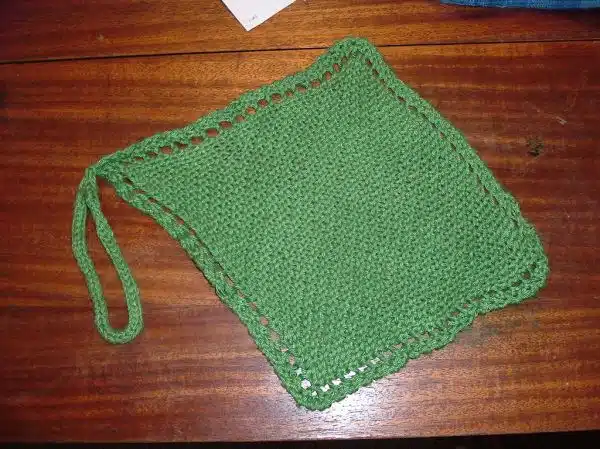Modal is a type of fabric that has gained immense popularity in the fashion industry due to its unique qualities. This fabric is known for its softness, durability, and moisture-wicking properties. Modal clothes are not only luxurious but also easy to care for when washed and handled correctly.
As a modal fabric care expert, I understand the importance of properly washing and caring for this delicate fabric. In this article, I will guide you on how to wash and care for your modal clothes to ensure longevity and maintain their softness. Whether you’re a new or seasoned wearer of modal clothing, these tips will help you take better care of your wardrobe and keep it looking fabulous for years to come.
Understanding The Composition Of Modal Fabric
Modal fabric is a type of rayon derived from beech tree cellulose. It is known for its softness, durability, and breathability. Modal fabric properties make it an excellent choice for clothing items such as underwear, activewear, and sleepwear.
One of the advantages of modal clothes over other fabrics is their moisture-wicking ability. Modal fibers can absorb up to 50% more moisture than cotton, which means they keep you feeling dry and comfortable even during intense physical activity. Additionally, modal clothes retain their shape and color well over time due to their high tensile strength.
Another advantage of modal clothes is their eco-friendliness. Beech trees used in the production process are sustainably grown without the need for pesticides or irrigation. The manufacturing process also uses less water and energy compared to other fabrics like cotton or polyester. This makes modal clothing a great choice for those who want to reduce their environmental impact while still enjoying high-quality garments.
To ensure that your modal clothes last longer and maintain their quality, it’s important to check the care label before washing them. Different brands may have different recommendations on how to care for their products based on the composition of the fabric blend. By following the care instructions on the label, you can prevent shrinking or damage to your garments and enjoy them for years to come.
Checking The Care Label Of Your Modal Clothes
- Modal fabric is a type of rayon that is soft, smooth and breathable, making it a popular choice for clothing.
- When caring for modal fabric, it is important to check the care label for washing instructions, fabric content and drying instructions.
- Washing modal fabric should be done with a gentle cycle on a low temperature setting and with a mild detergent.
- It is recommended to avoid using bleach or fabric softener to preserve the fabric’s softness and colour.
- After washing, modal fabric should be dried on a low temperature setting, as exposure to high temperatures can cause the fabric to shrink.
- Ironing modal fabric should also be done on a low temperature setting to maintain its quality and texture.
Washing Instructions
Modal fabric is known for its softness and durability, making it a popular choice for clothing pieces such as shirts, dresses, and pants. However, washing and caring for modal clothes require special attention to maintain their quality over time. Modal fabric properties make it prone to shrinkage and color fading when exposed to harsh chemicals or high temperatures.
To ensure the longevity of your modal clothes, it is important to check the care label before washing them. Most modal clothes are machine washable, but using cold water and a gentle cycle is highly recommended. Avoid using bleach or fabric softeners that can damage the fibers and cause discoloration. Instead, opt for mild detergent specifically formulated for delicate fabrics.
After washing your modal clothes, avoid using the dryer as the heat can cause shrinkage and damage the material. Instead, hang or lay them flat to dry in a shaded area away from direct sunlight. Benefits of using modal clothes include their breathability, moisture-wicking properties, and resistance to wrinkles – all of which can be preserved by following proper washing instructions.
In conclusion, taking proper care of your modal clothes is crucial in ensuring their longevity and maintaining their quality over time. By checking the care label before washing them and avoiding harsh chemicals or high temperatures during laundry day, you can enjoy your favorite modal pieces for years to come. Remember that caring for your clothes is an act of self-care that not only benefits you but also contributes to sustainability efforts by reducing waste in the fashion industry.
Fabric Content
As a modal fabric care expert, it is essential to emphasize the importance of checking the care label not only for washing instructions but also for fabric content. Modal fabric sustainability is one of its strengths, as it is made from renewable beechwood trees and requires less water and energy during production compared to other types of fabric. However, knowing the fabric content can help you determine the appropriate cleaning method and avoid damaging your modal clothes.
Compared to other types of fabric such as cotton or polyester, modal fabric has unique properties that require special attention when washing. For instance, modal fabric vs cotton has a higher resistance to wrinkles and shrinkage, but it can also be more delicate when exposed to high temperatures or harsh chemicals. Checking the care label can provide you with valuable information on how to maintain your modal clothes’ quality over time.
In summary, checking the care label of your modal clothes not only ensures their longevity but also contributes to sustainable fashion practices by reducing waste in the industry. Understanding the fabric content can help you make informed decisions about how to wash and care for your clothes properly. As a result, you can enjoy the benefits of wearing soft, durable, and eco-friendly modal clothes for years to come.
Drying Instructions
As a modal fabric care expert, it is crucial to provide comprehensive instructions not only for washing but also for drying modal clothes. Checking the care label can help you identify specific drying instructions that can prevent shrinkage and maintain your clothes’ quality over time. For instance, some modal clothes may require air drying instead of using a dryer machine.
Tips for air drying modal clothes include avoiding direct sunlight or high temperatures that can damage the fibers and cause shrinkage. Instead, find a well-ventilated area with enough space to hang your clothes without crowding them together. Additionally, you can gently reshape your modal clothes while they are still damp to avoid any wrinkles or creases.
Preventing shrinkage during the drying process is essential for maintaining the size and fit of your modal clothes. Avoid using high heat settings on your dryer machine, as this can cause the fibers to contract and reduce their overall size. You should also check the care label for any additional instructions on how to dry your modal clothes properly. By following these tips, you can ensure that your modal clothes remain soft, durable, and eco-friendly even after multiple washes.
In conclusion, checking the care label of your modal clothes provides valuable information on how to maintain their quality over time. Drying instructions play a crucial role in preventing shrinkage and avoiding damage to the fabric’s fibers. By following these tips for air drying and preventing shrinkage during drying, you can enjoy wearing soft and sustainable modal clothes for years to come.
Sorting Your Laundry
After checking the care label of your modal clothes, it’s time to sort them properly. Laundry organization is an essential aspect of garment care that should not be overlooked. Sorting techniques involve separating your laundry by color, fabric type, and degree of dirtiness. This way, you can prevent color bleeding and avoid damaging delicate fabrics like modal.
To sort your laundry effectively, start by creating separate piles for whites, darks, and bright colors. Whites should be washed separately to prevent discoloration from colored garments. Next, group your clothes according to fabric type. Modal clothing should be washed separately or with other delicate items like silk or cashmere to prevent snagging or stretching.
Lastly, separate heavily soiled items from lightly soiled ones to ensure that they are cleaned thoroughly without damaging the less dirty clothes in the same load. Sorting your laundry may seem like a tedious task, but it’s an essential step in ensuring that your modal clothes remain in good condition for longer.
- Separate whites, darks, and bright colors
- Group clothes by fabric type
- Sort heavily soiled items from lightly soiled ones
- Use mesh laundry bags when washing delicate fabrics
Now that you’ve sorted your modal clothing properly let’s move on to choosing the right detergent for optimal cleaning and care.
Choosing The Right Detergent
When it comes to washing modal clothes, the choice of detergent is crucial for maintaining their delicate fabric. It is recommended to choose detergents that are specifically made for delicate fabrics, such as wool or silk. These products usually contain fewer harsh chemicals that can damage the texture and color of your clothes.
If you want to take a more eco-friendly approach, there are many alternatives available in the market that are both gentle on your clothes and the environment. Eco-friendly detergents are formulated with natural ingredients that do not contain toxic chemicals commonly found in conventional detergents. They are biodegradable and come in recyclable packaging, making them an environmentally conscious choice.
In summary, choosing the right detergent is essential when it comes to washing modal clothes. Opting for eco-friendly alternatives and avoiding harsh chemicals will not only help preserve the quality and softness of your garments but also contribute to a healthier planet. In the next section, we will discuss the importance of using cold water for washing your modal clothes.
Using Cold Water For Washing
- Cold water rinsing of modal fabric is highly recommended to maintain the softness of the fabric.
- It is important to choose a detergent that is specifically designed for washing delicate fabrics to avoid damage.
- For optimal results, the water temperature setting should be cold or lukewarm when washing modal fabric.
- To avoid any fading or shrinkage of the modal fabric, it is best to use a mild detergent.
- When washing modal fabric, it is important to avoid contact with abrasive materials, as this can damage the fabric.
- To ensure that the modal fabric retains its softness, it should be washed with cold water and a delicate detergent on a low temperature setting.
Cold Water Rinsing
As a modal fabric care expert, I strongly recommend using cold water for washing and rinsing your modal clothes. One of the tips for effective cold water rinsing is to let the clothes soak in the water for a few minutes before agitating them gently. This allows the detergent to penetrate deeply into the fibers without causing any damage. Additionally, you can add a cup of white vinegar to the rinse cycle to help remove any lingering soap residue and keep your clothes looking fresh.
There are numerous benefits of using cold water for washing your modal clothes. First and foremost, it helps preserve their softness and color vibrancy over time. Hot water can cause shrinkage and fade, which is why it’s essential to avoid it as much as possible. Coldwater also saves energy by not requiring any additional heating, making it an environmentally-friendly choice too.
In conclusion, adopting good practices when washing your modal clothes is crucial to extend their lifespan and maintain their quality. By following these tips for effective cold water rinsing, you can achieve optimal results every time while enjoying all the benefits that come with using cold water for washing your clothes. Remember that taking care of your garments is not only about keeping them clean but also about showing respect for yourself and others by making conscious choices that benefit everyone in the long run.
Detergent Selection
When it comes to washing modal clothes, detergent selection plays a crucial role in maintaining their quality and preserving their softness. As a modal fabric care expert, I highly recommend choosing eco-friendly and biodegradable detergents that do not contain harsh chemicals. Understanding the impact of detergent chemicals on the environment is essential for making conscious choices that benefit both your clothes and the planet.
Choosing an eco-friendly detergent not only benefits the environment but also helps preserve the quality of your modal clothes. Harsh chemicals found in traditional detergents can damage the fibers and strip away natural oils, causing them to lose their softness over time. Biodegradable detergents are gentle on fabrics and break down naturally without leaving any harmful residues behind.
In conclusion, selecting an eco-friendly and biodegradable detergent is crucial for maintaining the quality of your modal clothes while protecting the environment. By understanding the impact of detergent chemicals on both your garments and the planet, you can make conscious choices that benefit everyone in the long run. Remember that every small step towards sustainability counts, and your choice of detergent is no exception.
Temperature Settings
When it comes to washing modal clothes, adjusting temperature settings is also crucial in maintaining their quality and preserving their softness. As a modal fabric care expert, I highly recommend using cold water for washing instead of hot. While hot water may be effective in removing tough stains, it can damage the fibers and cause shrinkage over time. Cold water, on the other hand, is gentler on fabrics and helps retain their natural oils and softness.
Using cold water for washing not only benefits your modal clothes but also helps conserve energy and reduce your carbon footprint. Hot water requires more energy to heat up, leading to higher electricity bills and increased CO2 emissions from power plants. By switching to cold water, you can save money on your utility bills while reducing your impact on the environment.
It’s important to note that not all garments are suitable for cold water washing. Some fabrics such as wool or silk require special care and may need to be washed using warm or cool water instead. Always check the care label instructions before washing any garment and adjust temperature settings accordingly. By taking these small steps towards sustainable laundry practices, you can make a positive impact on both your clothes and the planet.
Avoiding Bleach And Fabric Softeners
Using cold water for washing is an important step in caring for your modal clothes. This is because hot water can cause shrinkage, fading, and damage to the fabric. When washing your modal clothes, always use a gentle cycle to avoid any unnecessary wear and tear. In addition, it’s important to avoid using bleach or fabric softeners.
Bleach can be harsh on modal fabrics and can cause discoloration and damage. Instead of bleach, consider using alternatives such as hydrogen peroxide or vinegar. These options are gentler on the fabric but still effective at removing stains. Another option is to use natural fabric softeners such as wool dryer balls or adding a cup of white vinegar during the rinse cycle.
Fabric softeners are not recommended for modal fabrics because they can leave a residue that affects the fabric’s breathability and absorbency. Natural fabric softeners are a great alternative because they don’t contain any harmful chemicals that can harm the environment or irritate sensitive skin. Additionally, they help reduce static cling without leaving any residue.
Using a gentle cycle when washing modal clothes is crucial in maintaining their longevity. A gentle cycle minimizes agitation which reduces the risk of pilling and stretching of the fabric. It also helps prevent any potential damage caused by other factors such as zippers or hooks on other garments in the same wash load. By following these simple steps, you can ensure that your modal clothes remain looking their best for years to come while also being kind to both your wallet and the environment.
Using A Gentle Cycle
When it comes to washing modal clothes, using a gentle cycle is highly recommended. This will protect the fabric from any harsh movements or agitation during the wash. Most washing machines have a delicate cycle setting that you can use for modal clothes. However, if your machine does not have this option, you can simply adjust the water level to ensure less movement during the wash.
Using a delicate cycle will also help preserve any delicate trims or embellishments on your modal clothing. These items are often attached with glue or stitching that can come loose with too much agitation during the wash. By choosing a gentle cycle, you can reduce the risk of damage and extend the life of your clothing.
Overall, using a gentle cycle is an essential step in caring for your modal clothes. It helps protect the fabric and any delicate details while still effectively cleaning your garments. In the next section, we will discuss taking precautions when drying your modal clothes to ensure they last as long as possible.
Taking Precautions When Drying
- When drying modal fabric, it is important to avoid using high heat settings as this can cause the fabric to shrink, lose shape and color.
- Before drying modal fabric, it is advisable to pre-dry the fabric by laying it flat and allowing it to air dry for several minutes before putting it in the dryer.
- Additionally, it is recommended to turn the fabric inside out and use a low heat setting for the dryer cycle.
- Finally, modal fabric should be removed from the dryer as soon as possible and laid flat to prevent wrinkles or shrinkage from forming.
Avoiding Heat
Preventing shrinkage is a crucial factor in the care of modal clothes. One way to achieve this is by avoiding heat during drying. Heat can cause the fibers to shrink and lose their shape, leading to an ill-fitting garment. Thus, it is essential to follow proper drying techniques that do not involve heat.
There are various methods of drying modal clothes that do not require heat. Air-drying is one such technique that involves hanging the garment on a clothesline or drying rack. This method allows for natural air circulation, which helps maintain the fabric’s shape and prevents shrinkage. Another technique is laying the garment flat on a towel and rolling it up tightly to remove excess water before hanging it to dry.
It is important to note that even if you are using a dryer, ensure that it is set on low heat or air-dry mode. Avoid high temperatures as they can damage the fibers and lead to shrinkage. By following these simple steps, you can ensure your modal clothes stay in excellent condition for longer periods while maintaining their original shape and size.
Pre-Drying
As a modal fabric care expert, taking precautions when drying your clothes is crucial in maintaining their quality and longevity. Along with avoiding heat during the drying process, pre-drying techniques can also be beneficial in ensuring your modal clothes retain their original shape and size.
Air-drying is a simple yet effective pre-drying technique that involves hanging wet garments on a clothesline or drying rack. This method allows for natural air circulation that helps prevent shrinkage and maintains the fabric’s texture. Additionally, laying the garment flat on a towel and rolling it up tightly to remove excess water before hanging it to dry can also be helpful in preventing damage caused by tumble drying.
Although tumble drying can be convenient, it should be done with care to avoid damaging delicate modal fabrics. If you must use a dryer, ensure that it is set on low heat or air-dry mode. Avoid high temperatures as they can damage the fibers and lead to shrinkage. By taking these precautions when drying your modal clothes, you can ensure that they stay in excellent condition for longer periods while maintaining their original shape and size.
Avoiding Direct Sunlight
To ensure your modal clothes last long and retain their color, it is important to take precautions when drying them. After washing your clothes, never wring them out as this can damage the fibers in the fabric. Instead, gently squeeze out excess water before hanging them to dry.
When drying modal clothes, it is recommended to avoid direct sunlight as this can cause fading and discoloration. It’s best to dry your clothes indoors in a well-ventilated area. You can hang them on a clothesline or use a drying rack. If you need to use a dryer, choose a low heat setting and remove the clothes while they are still slightly damp.
To prevent fading and extend the life of your modal clothes even further, follow these tips:
- Wash dark colors separately from light colors.
- Use cold water instead of hot water when washing.
- Turn your clothes inside out before washing.
- Avoid using fabric softeners and bleach.
By following these guidelines for washing and drying your modal garments correctly, you can ensure that they will stay soft, comfortable, and looking like new for longer periods of time. In the next section we will discuss ironing methods for modal clothing to keep it wrinkle-free and presentable for everyday use.
Ironing Modal Clothes
As a modal fabric care expert, it is important to note that ironing modal clothes can be quite tricky. Modal is a type of rayon that is known for its soft texture and ability to drape beautifully. However, it is also prone to wrinkling, which can make it challenging to maintain a polished look. To ensure that your modal clothes are wrinkle-free, there are several tips that you need to keep in mind.
Firstly, it is important to choose the right type of iron for your modal clothes. Using an iron with adjustable temperature settings will help prevent damage to the delicate fibers of the fabric. It is best to set the iron on a low heat setting and avoid using steam as it can cause shrinkage or stretching of the fabric. Additionally, always test a small inconspicuous area before proceeding with ironing the entire garment.
Secondly, always use a pressing cloth when ironing your modal clothes. This will protect the fabric from direct contact with the hot surface of the iron and prevent any scorch marks or discoloration. A pressing cloth can be made from any lightweight cotton fabric such as muslin or cheesecloth.
Lastly, when ironing modal clothes, start with the inside of the garment first and work your way outwards. This helps to avoid any accidental creases or wrinkles while ensuring that every part of the garment receives equal attention.
In order to maintain your modal clothes properly, proper storage techniques are crucial. By following these tips for wrinkle-free modal clothes and using appropriate irons for this type of fabric, you can ensure that your garments remain looking their best for years to come. In our subsequent section about storing modal clothes properly, we’ll explore some essential guidelines you need to follow in order to preserve your precious modal clothing items for as long as possible.
Storing Modal Clothes Properly
Proper storage of modal clothes is essential in ensuring maximum longevity and minimizing wrinkles. The first step towards storing modal clothes properly is to fold them neatly and place them in a drawer or closet. Avoid hanging modal clothes as this may cause stretching and result in wrinkles. If you must hang your modal clothes, use hangers that are specifically designed for delicate fabrics.
Secondly, ensure that the storage space for your modal clothes is clean, dry, and well-ventilated. Moisture can cause mildew, which can damage your garments over time. Additionally, avoid storing your modal clothes in direct sunlight as this can cause fading and discoloration.
Thirdly, consider investing in fabric bags or cotton garment covers to protect your modal clothes from dust and other contaminants. These covers also help to maintain the shape of your garments while they are being stored.
To summarize, maximizing the longevity of your modal clothing involves proper storage techniques such as folding neatly, avoiding hanging when possible, keeping the storage space clean and dry, using garment covers or bags to protect them from dust and contaminants. By following these simple steps, you can ensure that your beloved modal clothes stay looking their best for years to come.
Moving forward into treating stains on modal clothes, it’s important to understand how different types of stains may require different treatments for optimal results.
Treating Stains On Modal Clothes
Did you know that modal clothing has become increasingly popular due to its softness, durability, and eco-friendliness? However, one of the biggest challenges of owning modal clothes is keeping them stain-free. Whether it’s coffee spills or grass stains, removing them requires a bit of extra care and attention. In this section, we will discuss some effective pre-treating methods for removing stains from your favorite modal garments.
Firstly, it is important to address a stain as soon as possible to prevent it from setting in the fabric. Begin by blotting the stain with a clean cloth or paper towel to remove any excess liquid or debris. Avoid rubbing the stain vigorously as this can cause further damage to the fabric. For oil-based stains such as makeup or grease, use a small amount of dish soap and gently rub it into the stain before washing.
Secondly, consider using natural pre-treating methods such as baking soda or white vinegar for tougher stains like wine or blood. Mix one tablespoon of baking soda with water to form a paste and apply it directly onto the stained area. Allow it to sit for 30 minutes before washing according to garment instructions. Alternatively, mix equal parts of white vinegar and water in a spray bottle and spritz onto the stained area before washing.
Removing stains from modal clothes can be tricky but with these pre-treating methods, you can effectively combat most common types of stains. However, prevention is always better than cure so make sure to avoid wearing your favorite modal clothing when participating in activities that may result in staining. In our next section, we will provide some tips on how to deal with shrinkage when caring for your beloved modal wardrobe items.
Dealing With Shrinkage
After successfully removing stains from your modal clothes, the next step is to prevent any shrinkage issues that may arise during washing. Modal fabric is known for its delicate nature, which makes it prone to shrinkage when exposed to high temperatures. To prevent this, always wash modal clothes in cold water and avoid using hot water at all costs.
When washing your modal clothes, be sure to use a gentle detergent that doesn’t contain harsh chemicals. This can help maintain the softness of the fabric while also preventing any damage that may occur during washing. Additionally, avoid using bleach or fabric softeners as these can lead to shrinkage and damage to the fabric.
To further prevent shrinkage issues, always air dry your modal clothes rather than using a dryer. This not only saves energy but also helps maintain the shape and size of your garments. If you have already experienced some shrinkage with your modal clothes, don’t fret. Fixing shrinkage issues is possible by soaking your clothes in lukewarm water mixed with a small amount of hair conditioner for about 30 minutes before gently stretching them back into their original shape.
Maintaining the softness of modal clothes is essential for ensuring their longevity and overall quality. In the next section, we will discuss some tips on how to keep your modal garments feeling soft and luxurious even after multiple washes.
Maintaining The Softness Of Modal Clothes
Modal fabric is a popular choice for clothing because of its exceptional softness and luxurious feel. It’s made from beech tree pulp, making it an eco-friendly option that’s both comfortable and versatile. However, to maintain the softness of your modal clothes, it’s essential to follow proper washing and care instructions.
One way to maintain the softness of your modal clothes is by avoiding harsh detergents and fabric softeners. Instead, use mild detergents that are free from bleach or enzymes. You can also add a small amount of white vinegar during the rinse cycle to soften the fibers further. When drying your modal clothes, avoid high heat settings as they can damage the fabric’s quality. Instead, opt for low heat or air-drying to keep them in good condition.
The benefits of modal fabric go beyond its luxurious feel and eco-friendliness. It’s also versatile enough to wear for different occasions – from casual outings to formal events. Modal clothes come in various styles, such as dresses, shirts, skirts, and even underwear. They’re lightweight, breathable, and perfect for hot summer days when you want to stay cool and comfortable. By taking care of your modal clothes properly, you can enjoy wearing them for years to come.
Transition: Now that we know how to maintain the softness of our modal clothes let’s discuss some common mistakes people make when washing and caring for them.
Common Mistakes To Avoid When Washing And Caring For Modal Clothes
When it comes to washing and caring for modal clothes, there are several common mistakes that one should avoid. Firstly, preventing fading is a top priority. To minimize the risk of fading, it is important to wash modal clothes in cold water and avoid using bleach or fabric softeners. Additionally, it is recommended to turn the clothes inside out before washing to prevent direct exposure to the detergent.
One other mistake to avoid when washing and caring for modal clothes is pilling. Pilling occurs when loose fibers tangle together and create small balls on the surface of the fabric. To prevent this issue, wash modal clothes separately from garments with zippers or hooks that can cause friction. It is also essential to avoid hanging modal clothes as this can stretch out the fibers and lead to pilling.
In conclusion, taking proper care of your modal clothes can extend their lifespan significantly. Avoiding common mistakes like preventing fading and avoiding pilling can help ensure that your favorite pieces stay in great condition for years to come. By following these simple tips, you can enjoy your modal clothing while feeling confident that you are protecting your investment in style.
Conclusion
Modal fabric is a delicate material that requires proper care to maintain its silky texture and stunning appearance. Understanding the composition of modal fabric is the first step towards ensuring that you handle it with the utmost care. Before washing your modal clothes, check the care label to determine their specific cleaning instructions.
Sorting your laundry and choosing the right detergent are crucial steps in caring for your modal clothes. Using cold water for washing will help preserve the quality of modal fabric, while treating stains as soon as possible can prevent permanent damage. Dealing with shrinkage and maintaining the softness of modal clothes should also be part of your regular garment care routine.
As a modal fabric care expert, I highly recommend avoiding common mistakes such as using hot water or harsh detergents, tumbling dry on high heat, or ironing at high temperatures. Following these tips will help you extend the life of your modal clothes and keep them looking beautiful for years to come. Remember: proper care leads to prolonged wear!
Image Credits
- “Face Cloth” by AnnaEA (featured)








![How To Wash And Care For White Clothes 8 The only genuine borax soap cleanses hygienically saves the clothes and hands. 20 Mule-Team brand Boraxo white laundry soap [front]](https://green-life.blog/wp-content/uploads/2023/05/YDXLLCovnOjq-150x150.jpg.webp)




















